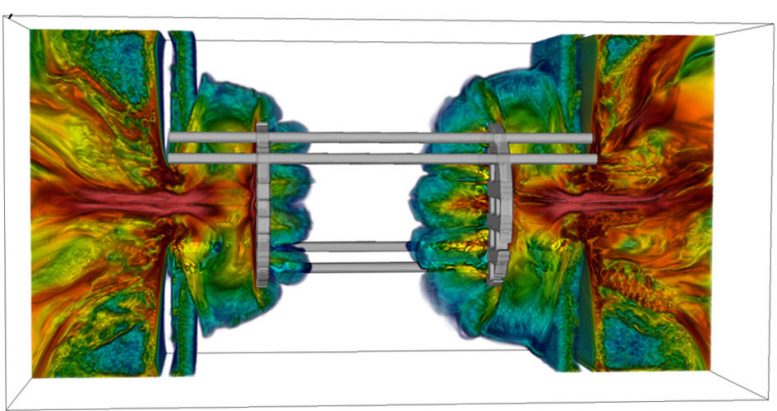
Three-dimensional FLASH simulation of the experimental platform, performed on the Mira supercomputer. Shown are renderings of the simulated magnetic fields before the flows collide. Courtesy of the Flash Center for Computational Science
The universe is highly magnetic, with everything from stars to planets to galaxies producing their own magnetic fields. Astrophysicists have long puzzled over these surprisingly strong and long-lived fields, with theories and simulations seeking a mechanism that explains their generation.
Using one of the world’s most powerful laser facilities, a team led by University of Chicago scientists experimentally confirmed one of the most popular theories for cosmic magnetic field generation: the turbulent dynamo. By creating a hot turbulent plasma the size of a penny, that lasts a few billionths of a second, the researchers recorded how the turbulent motions can amplify a weak magnetic field to the strengths of those observed in our sun, distant stars, and galaxies.
The paper, published this week in Nature Communications, is the first laboratory demonstration of a theory, explaining the magnetic field of numerous cosmic bodies, debated by physicists for nearly a century. Using the FLASH physics simulation code, developed by the Flash Center for Computational Science at UChicago, the researchers designed an experiment conducted at the OMEGA Laser Facility in Rochester, NY to recreate turbulent dynamo conditions.
Confirming decades of numerical simulations, the experiment revealed that turbulent plasma could dramatically boost a weak magnetic field up to the magnitude observed by astronomers in stars and galaxies.
“We now know for sure that turbulent dynamo exists, and that it’s one of the mechanisms that can actually explain magnetization of the universe,” said Petros Tzeferacos, research assistant professor of astronomy and astrophysics and associate director of the Flash Center. “This is something that we hoped we knew, but now we do.”
A mechanical dynamo produces an electric current by rotating coils through a magnetic field. In astrophysics, dynamo theory proposes the reverse: the motion of electrically-conducting fluid creates and maintains a magnetic field. In the early 20th century, physicist Joseph Larmor proposed that such a mechanism could explain the magnetism of the Earth and Sun, inspiring decades of scientific debate and inquiry.
While numerical simulations demonstrated that turbulent plasma can generate magnetic fields at the scale of those observed in stars, planets, and galaxies, creating a turbulent dynamo in the laboratory was far more difficult. Confirming the theory requires producing plasma at extremely high temperatures and volatility to produce the sufficient turbulence to fold, stretch and amplify the magnetic field.
To design an experiment that creates those conditions, Tzeferacos and colleagues at UChicago and the University of Oxford ran hundreds of two- and three-dimensional simulations with FLASH on the Mira supercomputer at Argonne National Laboratory. The final setup involved blasting two penny-sized pieces of foil with powerful lasers, propelling two jets of plasma through grids and into collision with each other, creating turbulent fluid motion.
“People have dreamed of doing this experiment with lasers for a long time, but it really took the ingenuity of this team to make this happen,” said Donald Lamb, the Robert A. Millikan Distinguished Service Professor Emeritus in Astronomy & Astrophysics and director of the Flash Center. “This is a huge breakthrough.”
The team also used FLASH simulations to develop two independent methods for measuring the magnetic field produced by the plasma: proton radiography, the subject of a recent paper from the FLASH group, and polarized light, based on how astronomers measure the magnetic fields of distant objects. Both measurements tracked the growth in mere nanoseconds of the magnetic field from its weak initial state to over 100 kiloGauss — stronger than a high-resolution MRI scanner and a million times stronger than the magnetic field of the Earth.
“This work opens up the opportunity to verify experimentally ideas and concepts about the origin of magnetic fields in the universe that have been proposed and studied theoretically over the better part of a century,” said Fausto Cattaneo, Professor of Astronomy and Astrophysics at the University of Chicago and a co-author of the paper.
Now that a turbulent dynamo can be created in a laboratory, scientists can explore deeper questions about its function: how quickly does the magnetic field increase in strength? How strong can the field get? How does the magnetic field alter the turbulence that amplified it?
“It’s one thing to have well-developed theories, but it’s another thing to really demonstrate it in a controlled laboratory setting where you can make all these kinds of measurements about what’s going on,” Lamb said. “Now that we can do it, we can poke it and probe it.”
Reference: “Laboratory evidence of dynamo amplification of magnetic fields in a turbulent plasma” by P. Tzeferacos, A. Rigby, A. F. A. Bott, A. R. Bell, R. Bingham, A. Casner, F. Cattaneo, E. M. Churazov, J. Emig, F. Fiuza, C. B. Forest, J. Foster, C. Graziani, J. Katz, M. Koenig, C.-K. Li, J. Meinecke, R. Petrasso, H.-S. Park, B. A. Remington, J. S. Ross, D. Ryu, D. Ryutov, T. G. White, B. Reville, F. Miniati, A. A. Schekochihin, D. Q. Lamb, D. H. Froula & G. Gregori, 9 February 2018, Nature Communications volume.
DOI: 10.1038/s41467-018-02953-2


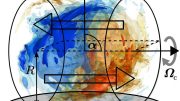
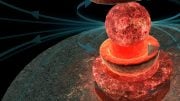
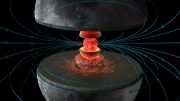

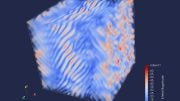
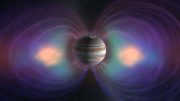
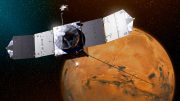
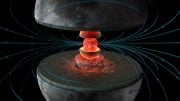
This information surely raises questions about the design of fusion reactors, which make use of a plasma medium suspended in a magnetic field in a structure reinforced by ferrous metal.
A deeper understanding of this turbulence and the magnetic energy it generates could force the designers of these reactors to reconsider the locations and the structures in which they house their machines or indeed it could be used to reduce the power required to contain reactor plasma (a highly magnetic plasma would be naturally attracted to an iron core rather than compelled by electro-magnetic force to remain within the chamber). This could be a game-changer!